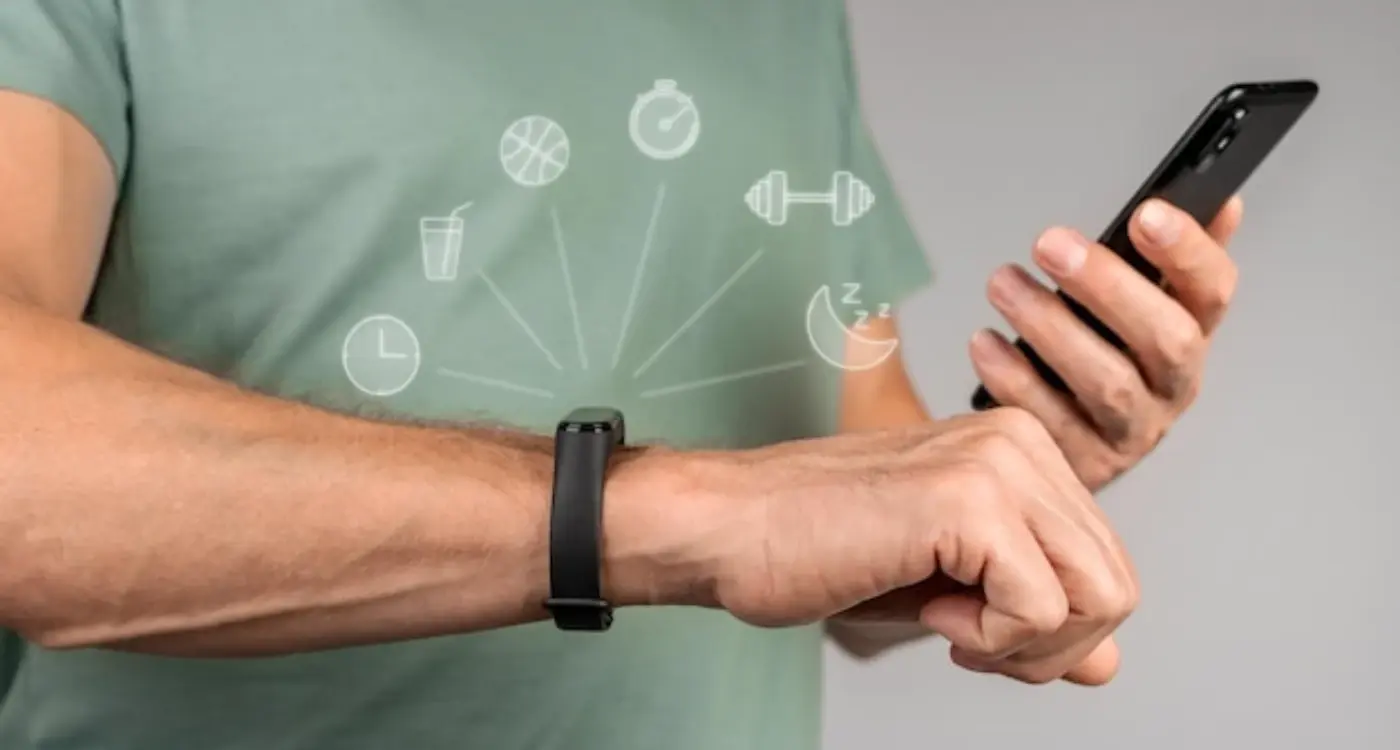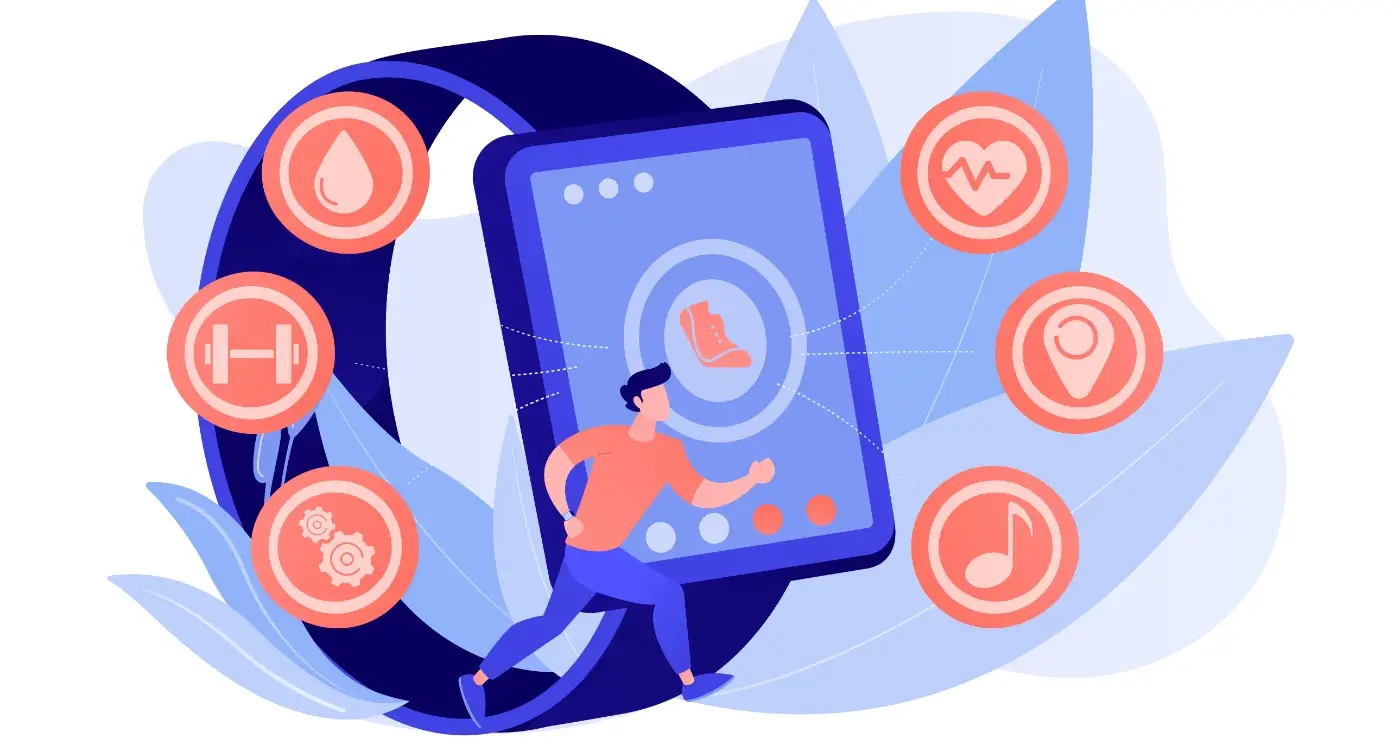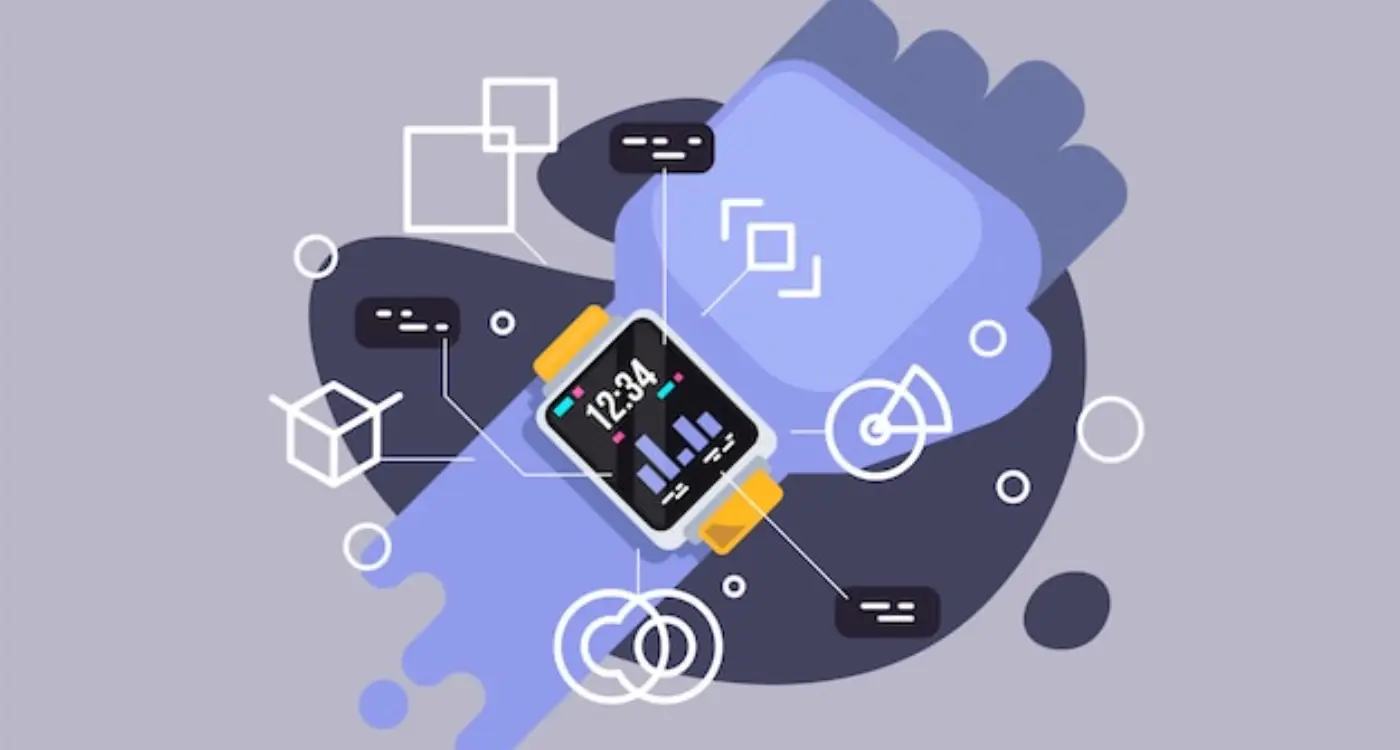How Do You Create Offline Functionality for Wearable Apps?
How many times have you reached for your smartwatch only to find it's basically useless because there's no WiFi or your phone's dead? It's bloody frustrating, isn't it—especially when you're out for a run or travelling somewhere remote. That moment when your expensive wearable becomes nothing more than a fancy digital clock really highlights why offline functionality matters so much in today's connected world.
I've been developing wearable apps for years now, and let me tell you, creating proper offline functionality is one of the trickiest challenges we face. It's not just about making things work without internet—it's about making them work well, efficiently, and in a way that doesn't drain the battery in two hours. The constraints are real: limited storage, tiny processors, and users who expect their devices to last all day.
The best wearable apps are the ones that work exactly the same whether you're connected or not—users shouldn't even notice the difference
Here's what I've learned: people don't care about your technical excuses when their fitness tracker can't record their workout or their smartwatch can't show their calendar just because they left their phone at home. They want standalone features that actually work. And honestly? That's exactly what they should expect. Building offline-first wearables isn't just a nice-to-have feature anymore—it's table stakes for any serious wearable app. The good news is that with the right approach, you can create wearable experiences that are genuinely useful whether your users are connected to the grid or completely off it.
Understanding Offline Wearable Architecture
Right, let's talk about the backbone of any decent wearable app—its architecture. When you're building for devices that spend half their time disconnected from the internet, you can't just wing it with a standard mobile app approach. Wearables are different beasts entirely.
The key thing to understand is that wearable apps need to be self-sufficient. Your Apple Watch or Fitbit isn't always going to have a phone nearby, and even when it does, Bluetooth connections drop all the time. So your app's architecture needs to assume it'll be flying solo most of the time.
Local-First Architecture
This means building what we call a "local-first" architecture. Everything your app does—storing data, processing information, running its core features—needs to happen on the device itself. The internet connection becomes a nice bonus for syncing data, not a requirement for basic functionality.
In practical terms, this means your wearable app needs its own database (usually something lightweight like SQLite), its own processing logic, and its own user interface that works independently. When I design these systems, I always start by asking: "What happens if this device never connects to anything?" If the answer is "it becomes useless," then you need to rethink your approach.
The Three-Layer Approach
Most successful offline wearable apps use a three-layer architecture: data storage at the bottom, business logic in the middle, and the user interface on top. Each layer needs to work without external dependencies. The storage layer keeps everything local, the logic layer processes data without needing cloud services, and the UI layer shows meaningful information even when there's no fresh data to display.
Data Storage Solutions for Wearables
Right, let's talk about where you actually store all this data when your wearable goes offline. The storage space on these devices is tiny compared to phones—we're talking megabytes, not gigabytes. Every byte counts, and I mean that literally.
Most wearables use local databases like SQLite or Core Data for structured information, but here's where it gets tricky: you can't just dump everything onto the device and hope for the best. I've seen apps crash because developers tried to store weeks of fitness data locally without thinking about storage limits.
Storage Types and Their Trade-offs
You've got different storage options depending on what you're building. Key-value storage works brilliantly for simple settings and preferences—think user goals, notification preferences, that sort of thing. For more complex data like workout sessions or health metrics, you'll need a proper database.
- Key-value pairs: Perfect for settings and simple preferences
- SQLite databases: Good for structured data with relationships
- File storage: Works well for media like voice memos or photos
- Memory caching: Temporary storage for frequently accessed data
The real challenge is deciding what to keep and what to sync immediately when connection returns. I typically store the last 7 days of detailed data locally, with older information compressed or summarised. This gives users recent access while managing storage constraints.
Always implement storage quotas and automatic cleanup. Set hard limits on how much data each feature can store, and regularly purge old information to prevent the app from running out of space unexpectedly.
Data Compression Techniques
Compression becomes your best mate when working with limited storage. Simple techniques like removing redundant timestamps or grouping similar data points can save significant space without losing functionality. Just remember that users need access to their most recent information first.
Sync Strategies When Connection Returns
Right, so your wearable app has been collecting data while offline—step counts, heart rate readings, workout sessions—and now the user's back in WiFi range or their phone's connected again. What happens next? This is where things can get proper messy if you haven't planned your sync strategy properly.
The biggest mistake I see developers make is trying to upload everything at once. Don't do this! Your user's been offline for hours, maybe even days, and now you're going to hammer their connection with a massive data dump? That's going to drain their battery, slow down their device, and probably fail halfway through anyway.
Prioritised Sync Queues
Instead, you need to think about what data matters most. Health emergencies or workout completions should sync first—users want to see that stuff immediately. Then maybe recent activity summaries, followed by detailed sensor data. I always set up a priority queue system that processes high-priority items first, then works through the backlog gradually.
Build in proper retry logic too because connections drop, servers go down, and mobile networks are unreliable. If a sync fails, don't just give up—queue it for another attempt with exponential backoff. And here's something I learned the hard way: always validate your data before syncing. Corrupted offline data can break your entire sync process.
Conflict Resolution
What if the user changed their profile settings on their phone while their watch was offline? Now you've got conflicting data trying to sync. You need clear rules about which version wins—usually the most recent timestamp, but sometimes user preferences should take priority. The key is being consistent and predictable about how these conflicts get resolved.
Essential Features That Work Without Internet
Right, let's talk about the features that actually matter when your wearable loses connection—and trust me, it will lose connection more often than you'd like. After years of building wearable apps, I've learned that users expect certain things to just work, regardless of whether they're connected or not.
Health tracking is obviously the big one. Heart rate monitoring, step counting, sleep tracking—these need to function completely offline. The sensors are built into the device anyway, so there's no excuse for requiring internet here. I always tell clients that if your fitness wearable can't track a workout without WiFi, you've missed the entire point of wearable tech.
Navigation is another must-have offline feature, though it's trickier than people think. You need to pre-download map data for the user's typical routes and areas. GPS works fine without internet (it's satellite-based after all), but without cached map data, you're basically giving someone coordinates without context. Voice memos and note-taking also work brilliantly offline—people use wearables for quick captures when they can't pull out their phone.
Core Offline Functions
Timer and alarm functions seem obvious, but you'd be surprised how many developers rely on network time servers unnecessarily. Media playback is huge too; users want their music or podcasts stored locally. The key is being smart about storage limits—most wearables have very little space to work with.
The best offline features are ones that users don't even realise are offline—they just work when needed
Payment functionality can work offline too, using NFC for contactless payments. The transaction gets queued and processed when connection returns. Quick reply messages, calendar viewing, and basic calculator functions round out the essentials. The trick is prioritising features that genuinely add value when disconnected, rather than trying to replicate every online feature in offline mode.
Battery Management for Offline Operations
Battery life is absolutely critical when you're building offline wearable apps. I mean, what's the point of having all that cached data if your device dies after two hours? The challenge is that offline functionality often requires more processing power and storage access, which can drain batteries faster than users expect.
When your wearable app is working offline, its constantly reading from local storage, processing data locally, and sometimes running background tasks to prepare for when connectivity returns. All of this adds up quickly in terms of power consumption. The key is being smart about when and how you use the device's resources.
Power-Saving Strategies That Actually Work
First thing—reduce your screen refresh rates when running on stored data. If you're showing cached fitness data, you don't need to update the display every second like you might with live data. I usually drop refresh rates to every 5-10 seconds for offline content, and honestly, users barely notice the difference.
Background processing is where things get tricky. Your app might be tempting to continuously process offline data, but this will kill battery life. Instead, batch your operations and only run them when necessary.
- Use low-power sensors when possible (accelerometer over GPS)
- Implement aggressive caching to reduce storage reads
- Pause non-essential background tasks during offline mode
- Reduce haptic feedback frequency for offline interactions
- Lower screen brightness automatically in offline mode
Monitoring Battery Impact
You need to actually test how your offline features affect battery drain. Run your app in airplane mode for extended periods and measure the impact. Most developers are shocked at how much power their "simple" offline features actually consume. Build in battery monitoring so you can throttle features when power gets low—users will thank you for it.
User Interface Design for Disconnected States
Right, let's talk about something that even experienced developers get wrong—designing interfaces for when your wearable app goes offline. I've seen too many apps that just... break when they lose connection, leaving users staring at spinning wheels or blank screens. Not good!
The key thing to remember is that users need to know what's happening. When your app is offline, don't hide it—embrace it. Show a clear but unobtrusive indicator that the device is working in offline mode. I usually place a small icon in the status area that doesn't scream "PROBLEM!" but gently informs the user about the current state.
Visual Feedback That Actually Helps
Your offline interface should feel different but not broken. Dim or grey out features that need internet connectivity, but keep them visible so users understand what they're missing. For features that work offline, make sure they look and feel exactly the same as when online—consistency is everything on tiny wearable screens.
Use subtle visual cues like a different background tint or a small "offline" badge rather than aggressive error messages. Users should feel informed, not alarmed.
Content and Interaction Patterns
Design your offline screens to show the most recent cached data rather than empty states. Even if its slightly outdated information, something is better than nothing on a wearable device. Create clear queues for actions that will sync later—maybe a small upload icon next to pending items.
Consider using progressive disclosure too. Show essential offline functions prominently whilst tucking away features that need connectivity. Your interface should guide users naturally towards what actually works in their current state.
- Clear offline status indicators
- Cached content display
- Disabled state styling for online-only features
- Pending action indicators
- Progressive disclosure of available functions
Right, let's talk about testing—because honestly, this is where most developers mess up their offline wearable functionality. You can build the most elegant offline system in the world, but if you don't test it properly, you're setting yourself up for angry users and one-star reviews.
I've seen too many apps that work perfectly when connected but fall apart the moment you lose signal. The problem? Most developers test their offline features while sitting at their desk with perfect WiFi. That's not how real people use wearables.
Simulating Real-World Conditions
Start by testing in airplane mode—obvious, I know, but you'd be surprised how many skip this basic step. But don't stop there. Test with intermittent connectivity, slow networks, and those annoying situations where your watch thinks its connected but actually isn't receiving data.
I always test what I call the "underground scenario"—you're tracking a workout, go into a tunnel, lose connection, come back out, and your watch needs to sync everything seamlessly. Your users shouldn't even notice the disruption happened.
Edge Cases That Break Everything
Here's what catches most developers off guard: storage limits. Fill up your test device's storage and see what happens when your app tries to cache more data. Test low battery situations too—wearables behave differently when they're trying to conserve power.
Don't forget time-based testing either. Leave your app offline for hours, then reconnect. Does it sync properly? What about conflicting data that was modified both locally and on the server while disconnected?
The best approach? Create a checklist of offline scenarios and test them religiously before each release. Your future self will thank you when users are praising your app's reliability instead of complaining about lost data.
Building offline functionality for wearable apps isn't just a nice-to-have feature anymore—it's become absolutely critical for user satisfaction. I mean, what's the point of having a fitness tracker that stops working the moment you lose signal during your morning run? That's just bloody useless, isn't it?
Throughout this guide, we've covered the technical foundations; from local data storage solutions to smart sync strategies when connectivity returns. But here's what I really want you to remember: offline functionality is about trust. Users need to trust that their wearable will work when they need it most, whether thats tracking their heart rate during exercise or storing their sleep data through the night.
The key principles we've discussed—intelligent data caching, efficient battery management, and thoughtful UI design for disconnected states—these aren't just technical requirements. They're the building blocks of a genuinely useful wearable experience. And let's be honest, with app connectivity being so unreliable on smaller devices, getting this right separates the apps people actually use from those that get uninstalled after a week.
Sure, implementing standalone features requires more upfront planning and testing. You'll need to think carefully about which data to store locally, how to handle sync conflicts, and what happens when storage fills up. But the payoff is huge: apps that work reliably regardless of network conditions tend to have much better user retention rates.
As wearable technology continues to evolve, offline mode capabilities will only become more important. Start building these patterns into your apps now, and your users will thank you for it later. Trust me on this one—I've seen too many promising wearable apps fail simply because they couldn't handle being disconnected gracefully.
Share this
Subscribe To Our Learning Centre
You May Also Like
These Related Guides

How Do You Handle Data Sync Between Wearables and Phones?

How Do You Pick the Right Sensors for Your Wearable App?



